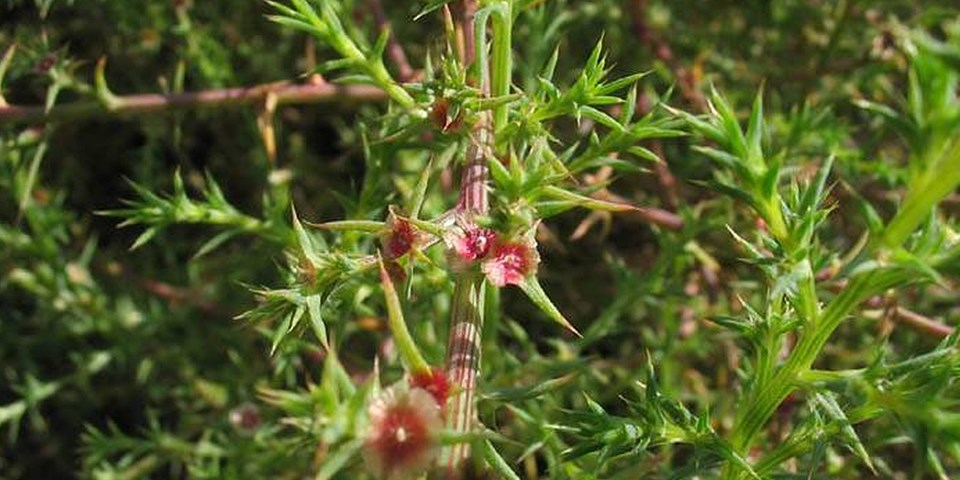
NPS Photo
Russian Thistle Salsola Kali Russian thistles are commonly referred to as tumbleweeds, and tumbleweeds are associated with America’s western landscape in movies—and even in the cowboy song “Tumbling Tumbleweeds” by Roy Rogers and the Sons of the Pioneers. The mature plants do indeed tumble across fields and roads in windstorms like beach-balls. Although strongly associated with western landscape, Russian thistle, as the name suggests, is not native to the United States. This invasive plant first showed up in the U.S. in South Dakota in the 1870s, probably hitchhiking in sacks of seed grain from the steppes near Russia’s Ural Mountains. It traveled quickly, taking root in areas disturbed by agriculture and accompanying irrigation in the arid western states. By 1900, it was widespread in the western U.S. in fields and roadside ditches. Russian thistle is generally considered a noxious weed. But when the plants first sprout, the thin green shoots and their thin leaves provide forage for pronghorn antelope, bighorn sheep, and domestic sheep. When plants become mature, it out competes native plants leaving domestic sheep and other animals with limited forage. The mature Russian thistle is not edible and can be toxic to animals. In White Sands National Park, Russian thistles, or tumbleweeds, provide seeds for Apache pocket mice and Gambel’s quail. |
Last updated: January 30, 2020
